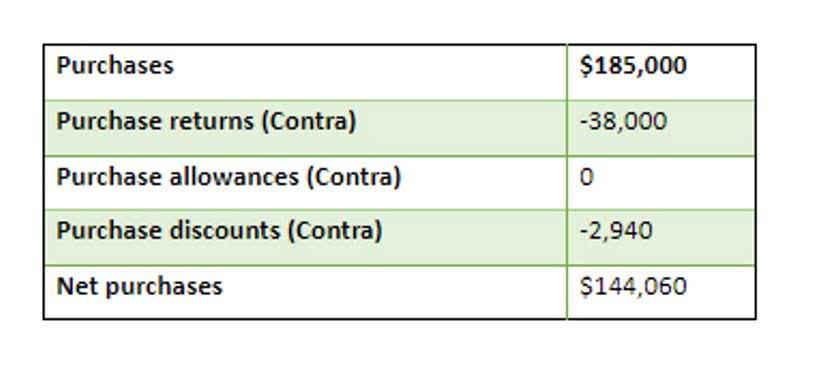What Are Preference Shares and What Are the Types of Preferred Stock?

The low par values of the preferred shares also make investing easier, because bonds (with par values around $1,000) often have minimum purchase requirements. The companies issuing shares of preferred stock can also realize some advantages. Investors should carefully consider the features, advantages, and risks of non-cumulative preferred stock when making investment decisions.
What is your risk tolerance?
- Like bonds, preferred stocks are rated by the major credit rating companies, such as Standard & Poor’s and Moody’s.
- Though regular preferred stock and prior preferred stock both hold precedence over common stock, prior preferred stock refers to an earlier issuance of preferred stock that takes priority.
- Statistics and metrics included in our ESG documents are estimates and may be based on assumptions or developing standards.
- This is why cumulative preferred shares are more valuable than noncumulative preferred shares.
- If the company has a particularly lucrative year and meets a predetermined profit target, holders of participatory shares receive dividend payments above the normal fixed rate.
It is also more constructive than periodic returns, as one can examine outliers. As noted above, accrued but unpaid dividends in respect of the Series U Depositary Shares from, and including, June 3, 2024 to, but excluding, the Series U Redemption Date, will be included in the Series U Redemption Price. Dividends in respect of the redeemed Series U Depositary Shares will cease to accrue on the Series U Redemption Date. If a company is struggling and has to suspend its dividend, preferred shareholders may have the right to receive payment in arrears before the dividend can be resumed for common shareholders.
- Companies with a stable financial position and low debt-to-equity ratios may be more reliable in meeting their dividend obligations.
- Institutions are usually the most common purchasers of preferred stock, especially during the primary distribution phase.
- During periods of financial strain, the company can choose not to pay dividends without creating a future financial obligation.
- It does not have a maturity, nor a specific buyback date but does typically have redemption features.
- He currently researches and teaches economic sociology and the social studies of finance at the Hebrew University in Jerusalem.
- The decision to pay the dividend is at the discretion of a company’s board of directors.
How confident are you in your long term financial plan?
Investors who own cumulative preferred shares are entitled to any missed or omitted dividends. For example, if ABC Company fails to pay the $1.10 annual dividend to its cumulative preferred stockholders, those investors have the right to collect that income at some future date. This essentially means cumulative preferred stockholders will receive all of their missed dividends before holders of common stock receive any dividends, should the company begin paying dividends again. non cumulative preferred stock Preferreds, which offer income potential, are securities that are generally considered hybrid investments, meaning they share characteristics of both stocks and bonds. They can offer more predictable income than do common stocks and are typically rated by the major credit rating agencies. Yet, because preferred shareholders have lower priority in the capital structure as compared to bondholders, the ratings on preferred shares are generally lower than the same issuers’ bonds.
Part 2: Your Current Nest Egg
This situation typically arises when a company has cash flow difficulties, and so its board of directors elects to temporarily suspend dividend payments until such time as cash flows improve. This preferred stock feature assures the owner that any omitted dividends on this stock will be made up before the https://www.bookstime.com/articles/what-is-an-expense-report common stockholders will receive a dividend. Any omitted dividends on cumulative preferred stock are referred to as dividends in arrears and must be disclosed in the notes to the financial statements. For example, ABC Company normally issues a $0.50 quarterly dividend to its preferred shareholders.

- As such, preferred stock prices move in a narrower range, and tend to do so more on interest-rate risk or the issuing company’s credit risk.
- The Depositary Shares will be redeemed at a redemption price of $25 per Depositary Share (equivalent to $1,000 per share of Series D Preferred Stock) (the “Redemption Price”).
- Any opinions expressed herein are given in good faith, are subject to change without notice, and are only correct as of the stated date of their issue.
- Though not exactly identical, a perpetual preferred stock has characteristics that are similar to a bond with an extremely long maturity date.
- This means that if the issuing company decides not to pay a dividend for a specific period, the missed dividend is not carried forward or accumulated.
Preferreds technically have an unlimited life because they have no fixed maturity date, but they may be called by the issuer after a certain date. The motivation for the redemption is generally the same as for bonds—a company calls in securities that pay higher rates than what the market is currently offering. Also, as is the case with bonds, the redemption price may be at a premium to par to enhance the preferred’s initial marketability. Investors should consider the dividend history and payout ratio, financial strength of the issuing company, and market conditions and interest rates when investing in non-cumulative preferred stock. Non-cumulative preferred stock does not accumulate unpaid dividends, whereas cumulative preferred stock does. This means that non-cumulative preferred stockholders may receive less in the event of a company’s liquidation or bankruptcy.
Farmer Mac Declares Quarterly Dividends, Announces Intent to Redeem Series C Preferred Stock – PR Newswire
Farmer Mac Declares Quarterly Dividends, Announces Intent to Redeem Series C Preferred Stock.
Posted: Wed, 15 May 2024 20:15:00 GMT [source]
Suffice to say, that – as with any investment – it’s critical for individual investors to understand the particular terms and features of the preferred stocks they are buying. Preferred stock can have its place in a well-diversified portfolio, but investors should be aware of its downsides. This asset class is sensitive to interest rate fluctuations and offers limited upside potential but offers above-average payouts as a notable positive. Similarly, holders of preferred stock may be able to take advantage of lower tax rates on qualified dividends, which may enjoy a 0, 15 or 20 percent rate, though not all preferreds are able to. When considering purchasing preferred stock, it’s important to take into account whether or not you’re willing to potentially miss out on any unpaid dividends. Preferred stock is often referred to as a hybrid investment, because it offers characteristics of both a stock and a bond.


The potential loss of missed dividends, limited protection for investors, and lower priority in liquidation are the main disadvantages of non-cumulative preferred stock. By not accumulating unpaid dividends, the company has the option to skip dividend payments during periods of financial strain without incurring a significant future financial obligation. Both in terms of its income potential as well as risk, preferred stock lies somewhere between common stock and bonds. Preferred stock promises the investor a fixed annual payment, usually expressed as a percentage of its face, also known as par value.

0 Comments
Leave your comment here